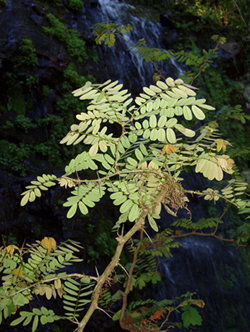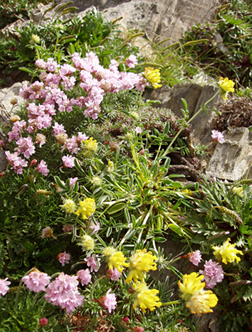Global: A new approach to the IUCN Red List?
10.12.09
The Red List provides us with a yearly shock. A reminder of just how many plants and animals around the world are imperilled. But how many of us truly understand what it takes to get on the list and the amount of work involved in compiling it?
In Trends in Plant Science in November 2009 George E. Schatz from Missouri Botanical Garden very elegantly explains how plants make it, or not, onto the Red List and also, more importantly, what it means for conservation decision-making.
As Schatz puts it in his opening “the continuing decline of plant diversity will have a greater impact on human society than any other type of biodiversity loss.” But although plants provide the backbone, or “fundamental basis”, for all life on Earth our knowledge of them is wholly inadequate.
It is widely accepted that the Red List is the most important; despite the fact the big countries such as the USA, Canada, and Australia have their own systems - at least in part - for cataloguing rare plants and Schatz makes an unusual point when describing the completeness of the IUCN list where he says “only 3.2% of plants currently appear on the IUCN Red List”, which superficially seems a good thing. But he continues, “only two groups of plants (conifers and cycads) have been (nearly) comprehensively assessed” and this is the really critical point. Only a relatively small proportion of the global flora has been in any way assessed, compared to the much higher numbers of vertebrates.


From rainforest trees (left) to coastal cliffs (right) the Fabaceae are a diverse
group of plants that play important roles in habitats, economics, and nutrition
Schatz estimates that “given >50% of countries have completed some form of plant Red List assessment at a national level, it is probable that the conservation status of at least 100,000 flowering plant species (approximately 28%) has been evaluated at some point during the past 20 years.”
There may be a looming problem here. The already over-worked Red List Programme Office “simply has not had the capacity to keep pace with the number of submitted assessments” and with an ongoing glut of new reports arriving from South Africa, Madagascar, Caucasus, and the Eastern Arc Mountains of East Africa, which all boast high levels of endemism, this situation does not look likely to improve anytime soon.
The assessment process, inherently, relies on a combination of individual enthusiasm and funding. Ultimately this means there has been a scattergun approach to the Red List process, and this is something Schatz thinks could be improved. Currently, when reporting, the vertebrates are split into amphibians, reptiles, mammals, and birds, while plants are merely… plants. Schatz firmly believes this system doesn’t go nearly far enough to factor the extraordinary phylogenetic and habitat diversity of plants and suggests a method of working through the plant families a bit more systematically.
After considering the various merits of cycads, cacti (not big enough global distribution and representation), palms (mainly restricted to humid tropics), and bamboo (mainly tropical and localised), he lands on the Fabaceae.
There are approximately 19,300 species of leguminous plants according to Schatz. They range from “annual desert herbs to rainforest canopy trees” and are almost ubiquitous in their coverage of the globe, nitrifying soils wherever they go, that makes them a reasonable candidate family to assess in entirety.
But crucially, it may be their vital role in human nutrition (33% of our dietary nitrogen, rising to 66% in some areas) that seals the deal. Schatz says Legumes are cultivated on 15% of arable land and account for 27% of total primary crop production. They have huge financial worth and around half are crop wild relatives. This extraordinary combination of factors makes for an incredibly strong argument: survey the humble peas and beans and “galvanise” plant conservation.
I think Schatz has landed on something here. It makes perfect sense to concentrate on a diverse family like this and it may give, as he suggests, a much better representation of the health of the world’s wild plants.
For the full article go to Trends in Plant Science
Related links:
Over 12,000 plants on the Red List
03.10.09
It’s that dreaded time of year again - the time when it is spelled out so clearly how badly we are failing the planet. The latest update of the IUCN Red List of Threatened Species shows that 17,291 species out of the 47,677 assessed species are threatened with extinction. Of these a staggering 12,151 are plants - up 96 on last year - but it’s almost guaranteed they will get less publicity than their furry friends.